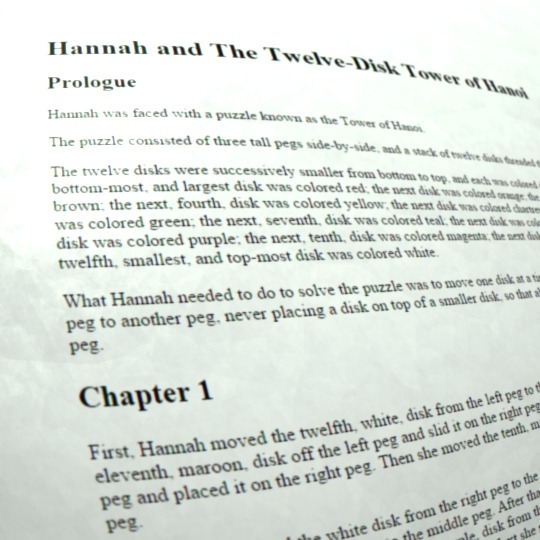

Hannah and The Twelve-Disk Tower of Hanoi (2014)
I’ve been talking about context a lot lately, for good reason: it often is the thing that introduces the essential order that makes good procedural generation come to life.
When generating stories, there have been a lot of attempts to codify the structure of storytelling, based on fairy tales, templates of betrayal, modeling the needs and knowledge of the characters, and so on. Sometimes these approaches produce interesting results. But that is not the only way to give a story structure.
Many other processes have patterns that look somewhat like the pattern of a story: Chess has an opening, rising action, and climax, fitting Freytag’s pyramid rather well but being different each time.
Remember, while mimicking a natural process is one way to do procedural generation, it is far from the only way. Following the principle of using unusual input and outputs in our procedural generation machines, there are a whole host of other processes that we can use to structure our stories.
Sean Barrett’s 2014 NaNoGenMo entry Hannah and The Twelve-Disk Tower of Hanoi illustrates this perfectly. While it is a bit dry as literature, it demonstrates how a non-narrative process can be transformed into a plot.
AI researchers have spent a lot of time experimenting with things like psychological models for characters, which is great. But if you’re a writer or designer you shouldn’t let your inability to write a human-like AI stop you from generating interactive stories. Ultimately, as long as the result feels right you can use nearly anything to procedurally generate something else.
